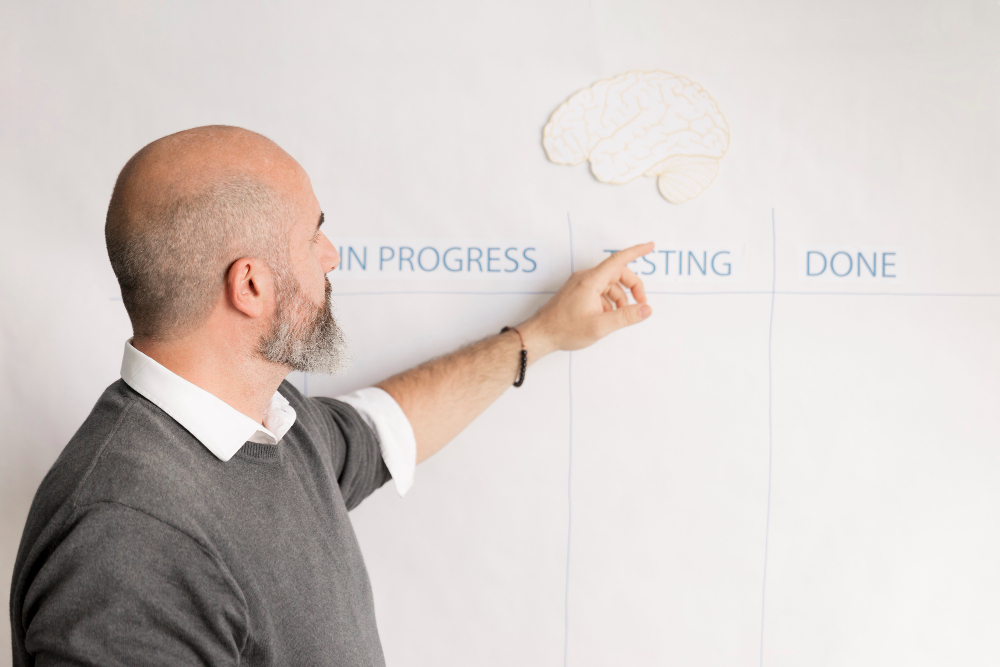
Analyzing Needs: A Guide for Product Discovery
The success of any product in the market significantly depends on how well it resonates with the needs of its users. A thorough understanding of your customers’ needs, pain points, and desires is thus critical in the product discovery process. According to a study by Mckinsey, companies that excel in understanding user needs during product discovery are twice as likely to deliver superior products.
In this comprehensive guide, I will delve into the art of needs analysis during product discovery. I aim to provide you with profound insights into how to effectively analyze your customers’ needs during product discovery and leverage that information to create value-driven products. This guide is particularly suitable for business and organizational leaders seeking to champion their product development process in line with customer needs.
Section 1: Understanding Product Discovery
Product Discovery is an essential phase in the development of any product. It involves conducting research to understand user needs, market demands, and technological possibilities before starting the actual product development. Harvard Business Review states: “The ultimate goal of product discovery is to address the most significant risks and unknowns to determine whether a product idea is worth pursuing”.
The process often involves several steps, including identifying potential users, understanding their needs, conceptualizing solutions, and validating these solutions through prototypes and MVPs (minimum viable products). The insights gained during product discovery form the foundation for subsequent product development efforts.
Moreover, product discovery is different from product development. During product development, the focus is on executing ideas to create and launch a product. On the other hand, product discovery revolves around exploring, experimenting, and validating ideas before proceeding to development; a map to navigate through the competitive market.
Section 2: The Importance of Needs Analysis in Product Discovery
Needs analysis refers to the process of identifying and understanding the requirements of a system or product from the users’ perspective. It involves collecting, analyzing, and interpreting data about users’ needs, wants, and expectations.
In the context of product discovery, needs analysis plays a quintessential role. As identified by Forbes, understanding user needs is a vital starting point as it informs the direction of the product development process.
By conducting a thorough needs analysis, you can identify gaps in the market, understand user pain points, and gather insights that would inform the design and development of your product. Ultimately, needs analysis can help ensure that your product provides real value to your users and improves their satisfaction.
Section 3: Identifying Customer Needs
Understanding your customers’ needs is a fundamental step in the product discovery process. It refers to the perceived problems, desires, or requirements that customers have and would like a product or service to solve or fulfill.
To effectively identify customer needs, here are several techniques you might consider:
- Conducting Surveys: Surveys offer a direct way of getting information from your customers about what they need or prefer.
- Customer Interviews: Personal interviews allow for deeper engagement and can uncover needs that customers might not be aware of, or fail to mention in surveys.
- Focus Groups: Focus groups involve moderated discussions with a group of customers, allowing you to dive deeper into specific issues or needs.
- Observation: In some cases, observing how customers use your product or interact with your brand can reveal inarticulated needs.
- Social Media and Online Forums: Platforms where customers freely discuss their experiences can be a rich source of insights into their needs and pain points.
One good example of a company that effectively identifies customer needs is Netflix. They extensively use data analytics to understand their viewers’ preferences, like what they watch, when they watch, and how they watch. This deep understanding of customer needs has been key to Netflix’s success in producing popular original content.
How Netflix uses big data to create content and enhance User Experience
Section 4: Recognize Customer Pain Points
Customer pain points are specific issues that customers are experiencing that your product or service can address. Identifying these pain points is crucial as it allows you to develop solutions that directly address the problems your customers are facing.
Strategies for identifying customer pain points include:
- Customer Feedback: Direct feedback from customers can often highlight problems they’re facing with your product or in their customer journey.
- Reviews and Ratings: Online reviews and ratings can reveal common issues that customers have with your product or service.
- Competitive Analysis: Understanding where your competitors are failing can spotlight potential pain points for your customers.
- Employee Feedback: Your sales and customer service teams interact with customers daily and can provide valuable insights into their challenges.
For instance, the widespread pain point of slow and complex banking procedures led to the birth of Monzo, a UK-based digital bank. They identified this pain point and filled the market gap with fast, user-friendly banking services.
Case Study: The Rise of Monzo
Section 5: Evaluating Customer Desires
In addition to needs and pain points, understanding your customers’ desires or aspirations can help you design products that not only meet their functional needs but also delight them and exceed their expectations.
Here are few techniques for uncovering customer desires:
- Visioning: Ask customers to envision an ideal future scenario or experience with your product or service. This can reveal aspirations that are not currently being met.
- Experiential Interviews: By discussing customers’ past experiences, you might glean insights into their motivations, frustrations, and desires.
- Usability Tests: Observing customers interact with your product can provide valuable insights into their desires.
Apple Inc. is a classic example of a company that excels in identifying and fulfilling customer desires. From sleek design to user-friendly interfaces, Apple products consistently exceed customer expectations by delivering innovative features and experiences. Read: How Apple Uses Consumer Behavior Marketing to Win
Section 6: Leveraging Customer Needs, Pain Points, and Desires
After identifying your customers’ needs, pain points, and desires, the next step is leveraging this information to inform your product discovery process. And, how do we do this? By:
- Creating User Personas: User personas are fictional representations of your ideal customers based on your research. They help to ensure your product is designed with a clear focus on the user.
- Developing User Stories: User stories describe the types of users, what they want, and why. They offer a simple way to capture requirements from the user’s perspective.
- Using a Prioritization Matrix: This tool helps you prioritize features or improvements based on their expected impact and feasibility.
- Prototype and Testing: Create mock-ups or prototypes of your product and test them with users to gather immediate feedback and make improvements.
The Story of Slack, a communication platform known for its focus on user experience is inspirational. They continually leverage user feedback to make improvements and add new features that address user needs and pain points.
Section 7: Creating Products that Provide Real Value
Creating products that provide real value can significantly improve customer satisfaction and loyalty. According to Gartner, businesses that emphasize value creation are more likely to grow and retain their customers.
Strategies to create value-driven products:
- Solve a Real Problem: Ensure your product addresses a significant problem or need for your customers.
- Deliver Benefit: Your product should deliver clear and tangible benefits.
- Differentiate: Your product should offer something unique or better compared to alternatives in the market.
- Offer a Seamless User Experience: A product that is easy and pleasant to use enhances customer satisfaction.
Amazon is a company that exemplifies value creation. Whether it’s the one-click ordering, personalized recommendations, or fast delivery, Amazon continually innovates its services to provide maximum value to its customers.
Section 8: Driving Customer Satisfaction
The relationship between product value and customer satisfaction is a strong one. A Deloitte study says: a product that provides real value often leads to higher customer satisfaction, which in turn, leads to customer loyalty and advocacy.
We can drive customer satisfaction through value-driven products by:
- Regularly Soliciting Feedback: Regularly asking for customer feedback helps you stay responsive to their evolving needs and preferences.
- Proactively Addressing Issues: Don’t wait for problems to become complaints. Addressing issues proactively can significantly enhance customer satisfaction.
- Continuous Innovation: To keep up with changing needs and market dynamics, continually innovate your product offerings.
- Fostering Strong Customer Relationships: Build relationships with your customers through effective communication, transparency, and trust.
Consider Zappos, an online shoe retailer that has made customer satisfaction its number one priority. From offering free shipping and returns to providing exceptional customer service, Zappos continually strives to exceed customer expectations.
Conclusion
Understanding and analyzing customer needs, pain points, and desires during the product discovery process is crucial for creating products that deliver real value and drive customer satisfaction. By implementing the strategies and practices outlined in this guide, you can better navigate your product discovery journey. Be the Agile Explorer who is determined to analyze the needs of their target audience, just like any great adventurer would chart a course before embarking on a grand quest.
Remember that Leadership Tribe is always here to assist. We offer a range of consulting services to help businesses ignite, navigate, and master their transformation journey.
Call to Action
We hope you found this guide valuable. If you’d like more insights into how you can effectively analyze customer needs during product discovery, consider scheduling a call with us. And remember, creating value-driven products starts with understanding your customers’ needs. Make it a priority today!
FAQ
Q1: What is product discovery?
Product discovery is an essential phase in product development that involves conducting research to understand user needs, market demands, and technological possibilities before starting the actual product development.
Q2: What is needs analysis?
Needs analysis refers to the process of identifying and understanding the requirements of a system or product from the users’ perspective. It involves collecting, analyzing, and interpreting data about users’ needs, wants, and expectations.
Q3: How can I identify my customers’ needs?
Techniques for identifying customer needs include conducting surveys, customer interviews, focus groups, observation, and analyzing social media and online forums.
Q4: What are customer pain points?
Customer pain points are specific issues, problems, or frustrations that customers are experiencing which your product or service can address.
Q5: How can I discover my customers’ desires?
You can uncover customer desires through techniques like visioning, experiential interviews, and usability tests.
Q6: How can I leverage customers’ needs, pain points, and desires in product discovery?
You can leverage this information by creating user personas, developing user stories, using a prioritization matrix, and prototyping and testing your product.
Q7: How can I create a product that provides real value?
Ensure your product addresses a significant problem or need for your customers, delivers clear and tangible benefits, offers something unique or better compared to alternatives in the market, and offers a seamless user experience.
Q8: How can I drive customer satisfaction with my product?
You can drive customer satisfaction by regularly soliciting feedback, proactively addressing issues, continuously innovating your product offerings, and fostering strong customer relationships.









